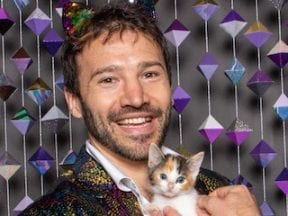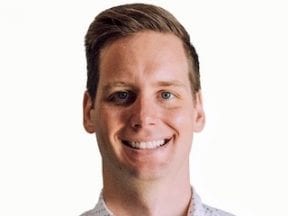The required skills to launch a business are typically much different from managing it for the long term. Bill D’Alessandro has done both. He launched a single ecommerce business in 2010 and then transformed the company into an operator of multiple online brands. He has evolved from performing most every task to focusing on a few.
“One of the challenges,” he told me, “was moving from doer to manager, from founder to CEO. That’s a leap a lot of entrepreneurs, myself included, struggle with.”
D’Alessandro’s company, Elements Brands, now owns six successful ecommerce businesses with plans to acquire more. He is firmly a manager-CEO, with 60 employees.
I spoke with him recently about transforming his company, hiring staff, raising money, and more. What follows is our entire audio conversation and a transcript, which has been edited for clarity and length.
Eric Bandholz: Tell us about your business.
Bill D’Alessandro: It’s called Elements Brands. We’ve been around since 2010. We are an acquirer of direct-to-consumer ecommerce companies. We buy ecommerce brands and centralize them onto our platform. We have about 60 employees in 51,000 square feet of office and warehouse space in Charlotte, North Carolina.
We’ll buy a brand and consolidate the shipping and even some manufacturing here in Charlotte. We have dedicated teams that run each brand. We don’t use a lot of agencies. We do almost everything in-house — from Facebook ads to search engine optimization, web design, all that stuff. We also have a dedicated supply chain group that works with all of our manufacturers.
We find entrepreneurs who have built something cool but are ready to move on. We write them a check, and then we help the brand grow. We aim to be a good long-term home.
We own six brands at present.
Bandholz: What makes for a good acquisition candidate?
D’Alessandro: We look for branded consumable products, something that you buy repeatedly. We seek businesses with more than $4 million in sales minimum. We love brands with at least 50 percent of their revenue from the direct consumer channel, using Shopify, WooCommerce, or similar.
There’s a bunch of buyers that seek 100-percent Amazon brands. We’re not one of them. We want brands that have a direct connection to their customers.
Bandholz: Tell us how you’ve built your staff.
D’Alessandro: Again, we are about 60 people with teams dedicated to marketing, supply chain, logistics, finance, and human resources. We have a deal guy that does outreach. I used to do all of those tasks.
When I started hiring folks, I asked myself, “What is the best use of my time?” I’m really good at acquisitions. I’m also good at digital marketing. I try to spend my time in those areas. Other people are better suited for logistics, shipping, accounting, finance — those types of skills.
So that’s what I think about when hiring people.
Bandholz: You’ve busted through challenges to get to six brands.
D’Alessandro: One of the challenges was moving from doer to manager, from founder to CEO. That’s a leap that a lot of entrepreneurs, myself included, struggle with. The skillset of a founder is different from a CEO. A mentor of mine described it as shifting from managing by knowing to managing by reporting.
When we’re a small team, we’re working hip to hip. We don’t need a bunch of reporting. But that doesn’t scale. Most of us can’t manage more than five or six people well. So we have to move from management by knowing to management by reporting, which means we set up structures to receive a piece of paper every week with metrics on it. We have qualitative discussions about how the business is going — good or bad.
Bandholz: How did you find the operations manager or an integrator that works with your vision and the various roles of the organization?
D’Alessandro: It isn’t easy. I talk to many entrepreneurs who ask, “How do I hire an integrator?” What they really mean is, “How can I hire someone to run my business while I sit on the beach?”
But an integrator still needs the visionary. And the visionary’s job is not absentee. The visionary has to be involved in the business, has to lead the business. The visionary is the leader who people look up to. Nobody likes to work when the person they work for is on the golf course or the beach, so to speak.
So it’s a matter of knowing what we as entrepreneurs are good at and what the integrator is good at. The integrator takes over the parts of the business that the visionary is not suited for.
Bandholz: Let’s go back to the start of your business. Did you have partners?
D’Alessandro: I started the business with a partner. Our relationship is still great. But I bought him out about a year after we launched. He decided to go to law school and get his MBA. He wasn’t committed to the business. I bought him out for $8,000. So, yes, I did briefly have a co-founder, but it wasn’t Elements Brands then. It’s been just me the whole way. I raised some money along the way in a couple of spots.
Bandholz: What was the strategy behind the extra money?
D’Alessandro: By 2016, I’d done a couple of acquisitions. We had three brands at the time, and the business was working. It was profitable; it was growing. I owned the whole thing. But I wanted to be bigger. I wanted to build a big company. I felt like I was ready for more.
So I started talking to some investors, explaining the potential of moving from three brands to five, 10, or 20.
Ultimately I raised about $3 million from some family offices. They have been phenomenal sounding boards. They joined my board and attend our quarterly meetings. We discuss the financials of the business. We review acquisition opportunities, strategy initiatives.
So raising the money ended up being so much more. It brought in experienced company-builders who have provided great guidance.
Bandholz: You’ve sold three of your brands.
D’Alessandro: Yes. It was a difficult decision because we don’t want to sell brands. We don’t buy brands with the intent to sell them. If we buy a brand, we want to own it for the next 10 to 20 years. But our company had evolved.
We owned eight brands at the time. Three of them were 6 percent of revenue in the aggregate. And it’s the same amount of work to send an email to 100 people as 100,000 — much of the work in running an ecommerce business scales.
So we opted to sell those three brands to entrepreneurs who could focus on them. They were too small for us.
Nurture My Body we sold to an energetic entrepreneur. I’m excited for him. Then we hired a broker to take the other businesses to market. We sold them in 2020.
Bandholz: What were the selling prices?
D’Alessandro: Around 3-times profit. I can’t disclose exactly what we sold them for, but we sold them for market multiples. You can go on BizBuySell.com to see where that is. Multiples have increased by about 1-times EBITA over the past year. Ecommerce businesses are pretty fairly priced now — to buy or sell.
Bandholz: Changing the topic, you ran an ad that generated a million dollars in sales. I want a bunch of those. So what’s the formula?
D’Alessandro: There is not really a formula. Anybody that’s advertised on Facebook knows it’s a lot of trial and error — throwing stuff at the algorithm, seeing what resonates, doing a lot of multivariant testing, figuring out which ad copy gets the lowest cost per acquisition.
We do a lot of work in-house. We try to make what we call “thumb-stopping” ads. Picture yourself scrolling through Facebook or Instagram with your thumb. We wanted an ad that in the first two seconds stops your thumb, and it makes you go, “What the hell is that?” Or, “That’s kind of interesting.”
So our million-dollar ad featured my eight-month-pregnant wife in a sports bra. Readers are like, “Whoa, that is a huge belly.” That will stop you scrolling through Facebook, especially if you’re pregnant, which was our target.
We try to create thumb-stopping content that speaks to the audience and drives them to a landing page that continues the story. If you have a certain model in the ad, insert her on the landing page, too, to continue the hook.
We’ll probably come up with a handful of these ads in a year that scales to a couple of million dollars, but you can’t do it with a formula.
And we’re always advertising for conversions. Your product page is a landing page. If you’re driving a lot of traffic to your product page from the ad, tweak the page to resemble the ad.
Bandholz: Are you’re looking for a certain return on ad spend?
D’Alessandro: We use what we call a “contribution margin” ROAS. This is a huge trap for advertisers on Facebook. That number, ROAS, is easy to get in the Ads Manager interface. But the number is a trap because it’s based on revenue, not profit. A 1-times ROAS seems like you’re breaking even, but you’re not.
Contribution margin is based on profit. We have what we call breakeven ROAS, which ranges from 1.6 to 2.1, depending on the brand.
Bandholz: Where can people learn more about you?
D’Alessandro: Our site is ElementsBrands.com. I invite listeners to reach out to discuss their business. The form on our website goes to our director of acquisitions and me. I’m also on Twitter, @BillDA. My personal website is BillDa.com.




